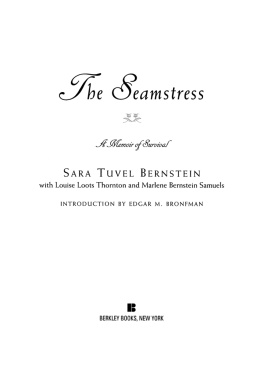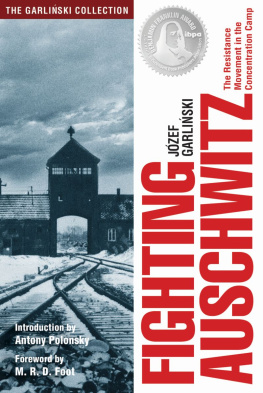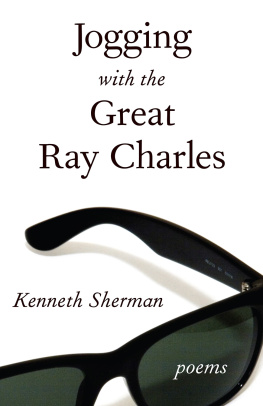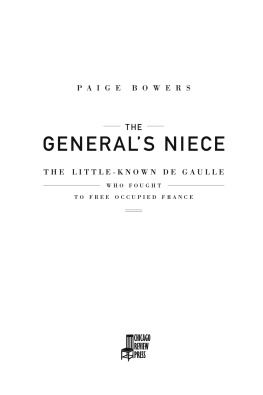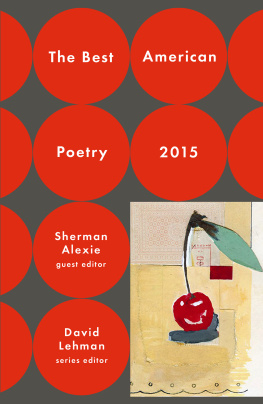ISBN for this digital edition: 978-0-8263-3433-6
2005 by the University of New Mexico Press
All rights reserved. Published 2005
Printed and bound in the United States of America
12 11 10 09 08 2 3 4 5 6
Paperbound ISBN-13: 978-0-8263-3432-9
The Library of Congress has cataloged the printed edition as follows:
Sherman, Judith H.
Say the name : a survivors tale in prose and poetry / Judith H. Sherman.
p. cm.
ISBN 0-8263-3431-8 (cloth : alk. paper)
ISBN 0-8263-3432-6 (pbk. : alk. paper)
1. Sherman, Judith H.Childhood and youth.
2. JewsSlovakiaKurimaBiography.
3. Jewish children in the HolocaustBiography.
4. Concentration camp inmatesGermanyBiography.
5. Holocaust, Jewish (19391945)SlovakiaKurimaPersonal narratives.
6. Ravensbrck (Concentration camp)
7. Holocaust, Jewish (19391945)Poetry.
8. Kurima (Slovakia)Biography. I. Title.
DS135.S55S55 2005
940.5318092dc22
2005000961
Foreword
BY DAVD CARRASCO
Apell. Roll call. The wake up siren sounds at four a.m.the sound of dread and ugliness. To help me get up I have developed a system that works for me, resistance, I call it, and get up. Family injunction in operation. The other option to getting up is being beaten to death, thrown into a punishment bunker, bulletsbut resistance works for mea gift to the family, a gift from the family.
Judith Sherman, Say the Name
Judith Sherman got up from her years of memories, nightmares, private resistance, and public silence to write Say the Name, this book about her childhood, her imprisonment in Ravensbrck death camp, and her liberation. She tells us she was armed by the family injunction, a promise the family members made to each other to survive/to live as they were being sucked into what she calls the primal night of the Holocaust! She survived and now, thanks to her skilled poetry and prose, her story survives. The chronological backbone of this book tells of her childhood home in Kurima, Czechoslovakia, several deportations, hiding in homes and in the forest, her struggles in several prisons including a converted castle, undergoing torture and witnessing murder in Ravensbrck, and her liberation. Along the way we meet and grow to care about and mourn for many individuals, especially women, whom she encounters, remembers, and now gives us their names. The book ends in the present day with her reflections on the destruction of families in the 9/11 attacks and on her own legacy for her children. As readers will experience, this book is an expression of Judiths ongoing resistance to Hitler and the Holocaust, and it is a gift to her family and to all our families.
The narrative, in prose and poems, speaks with two voicesthe thirteen-to-fourteen-year-old girl who experienced the dismemberment of family, European Jewry, and perhaps even God; and in the voice of the adult survivor remembering family and friends, raging against rape and murder, writing poems, and searching for a dialogue with a God who wasnt there. Here are a few examples of both of those voices, sometimes intermingling as she writes about the simple things that both children and Gods followers might care about when facing disaster,
I am not yet fourteen. I think of home. I would like to be with my mother. I never am any more. So much to tell her. All bundles are to be left on the side... The contents, flashlight, sweater, photographs, sewing kit, instant coffee, a mug, perhaps a prayer book, a book, brush, house keys, sockswill be integrated into the camp economy, or more likely the German Reich. But not the connections. They are severed...
and
I shall never not value shoes,
life is from the ground up,
life with shoes, perhaps,
without-death...
and later,
Come Messiah
Is not the apocalypse
Your cue
To do
The Messiah thing?
Tragically, the Messiah was not on cue and Sherman writes her life story with lamentation from what she calls survivorship territory where she lives on two tracks always,the Holocaust track and the track of life today. Selecting fruit at the grocery store, taking a shower, and seeing railroad tracks trigger her memories of the selection, gas chambers, and transports to death camps, and she realizes she will always be both old and young at the same time.
I am old in this late year
But my soul my soul
Is peopled with parents
Who are younger than my children
My brother will forever be nine.
While this Holocaust story might be read as a gripping example of womens testimonial literature, it is important to emphasize that Sherman has written this book to testify, and sometimes we have the impression she is both a witness for the victims and the inquisitor of God in the courtroom of the Shoah. She stands up and gives evidence before us and her God of the relentless sufferings caused by the experts in humiliation, at camps where the whip reclaims the essence of the placepower, superiority, violence. She testifies and shrewdly tries to draw God into her ongoing ordeal and trial as a partner in dialogue. When she doesnt elicit a response, she skillfully rebukes God through a series of poems and pointed questions about his absence when he was most desperately needed. She writes when remembering the women shot dead for trying to aid others,
Are You not tempted,
Lord,
To intervene
Lend a hand
Prevent a scream?
As no response was forthcoming, Sherman is driven to speak up for the others. As though in a courtroom she writes in Reluctant Witness that she is here to testify to their murder of Anna who starved, Evka who was beaten to death, Daniel who was gassed, Johanna who was shot down... leading her to ask three simple yet profound questions,
Where is the judge?
Where are you, judge?
Is there a judge?
Judith Sherman is symbolically standing up for the many who cannot stand up for themselves, and her interrogation of God wakes us up and raises the absurd possibility that there was no judge. No justice or mercy giver! Its not that the judge didnt show up on time, its that the judge abdicated his role, failed to pay attention, intervene, and produce awe with his justice, his love. She and we are left to wonder if Anyone is out there listening, then or now. Shermans work is a truly compelling narrative in that it treats both God and humans with life bestowing awareness. At one point she gives us her definition of God or what he would have to be to live up to his Biblical reputation. Its a simple definition, Accountability is Divinity, and shes insisting on this accountability for the humans we meet in this book and more.


